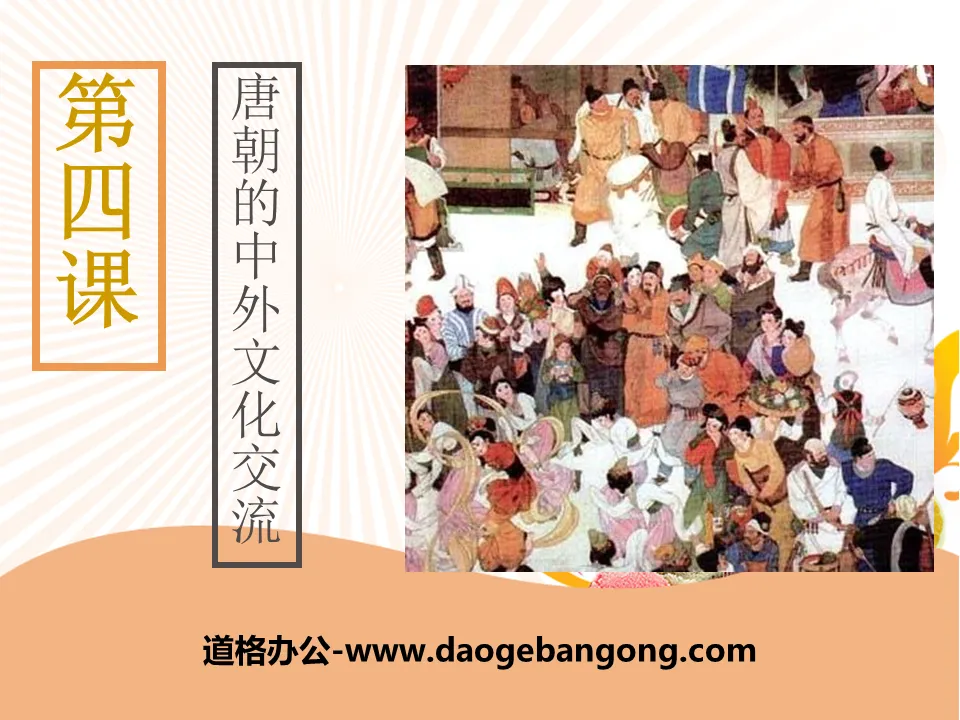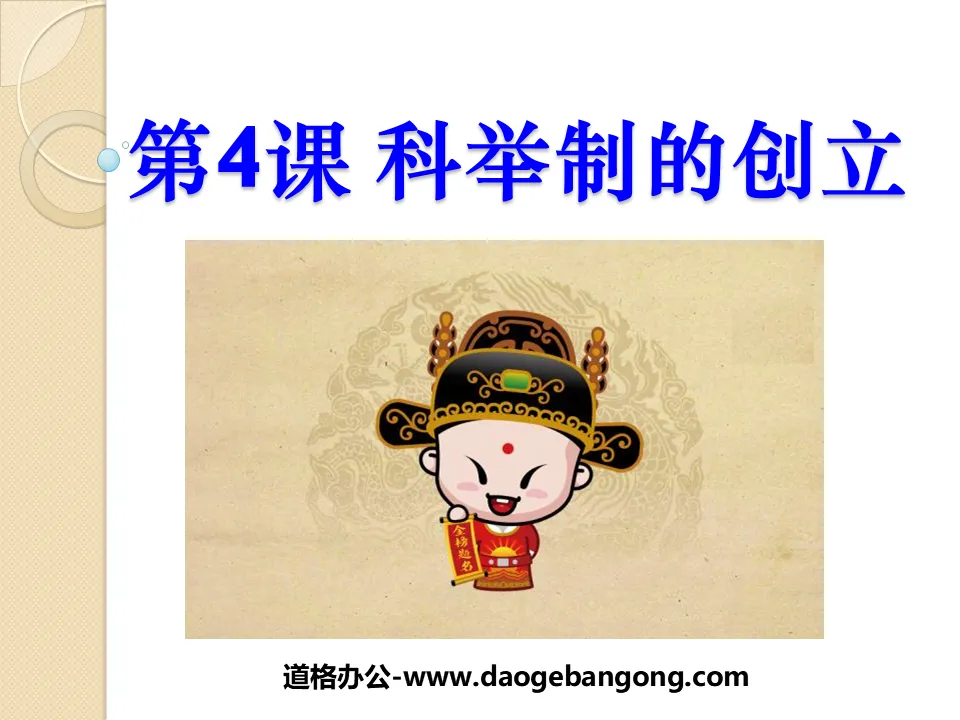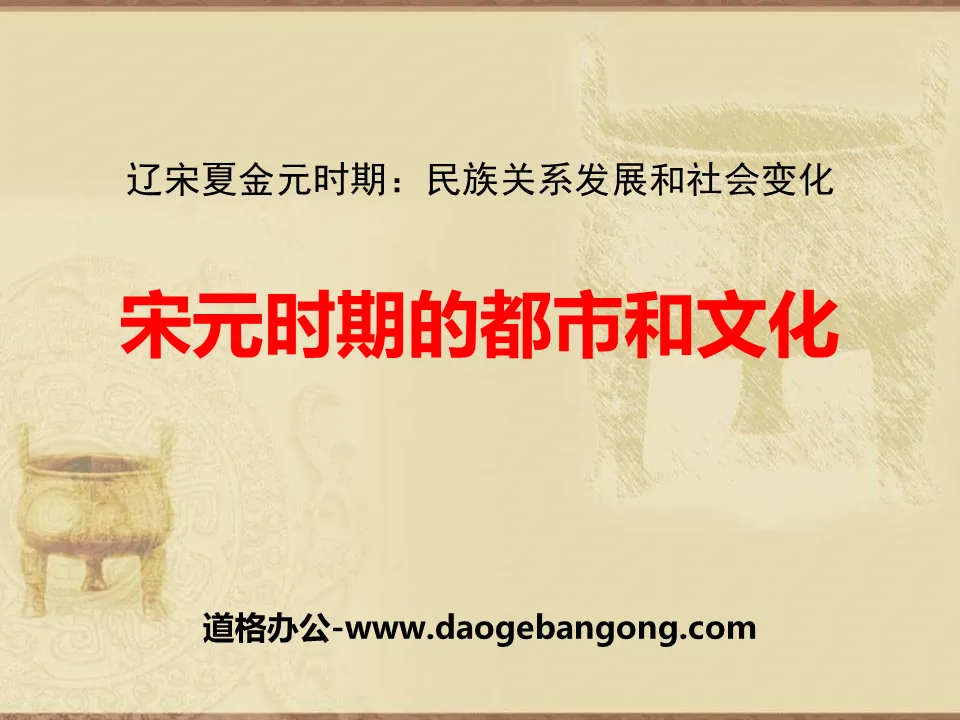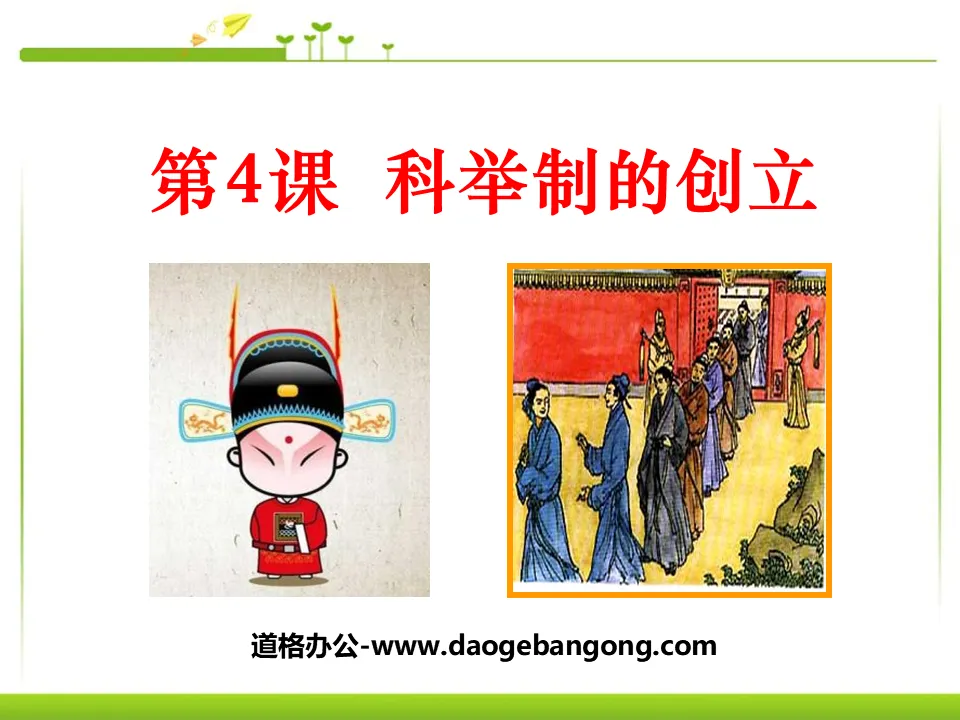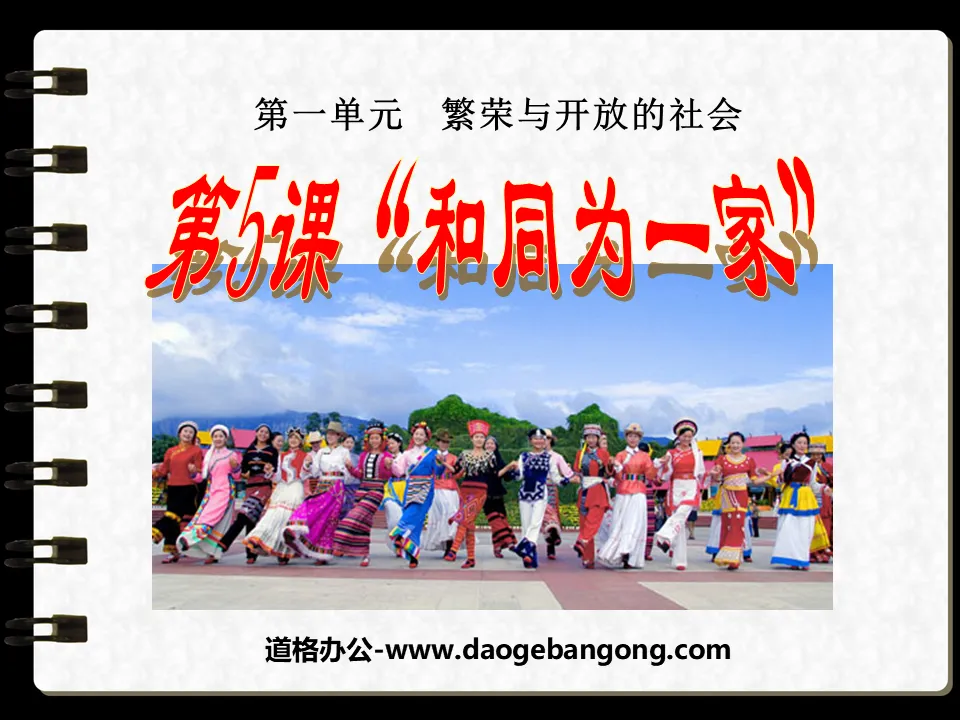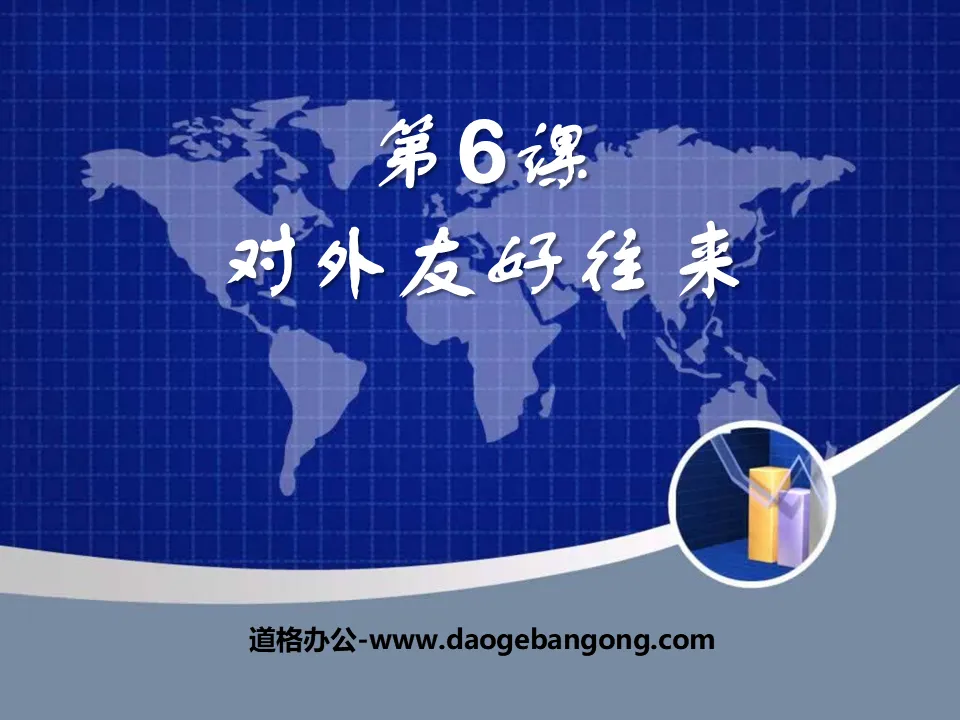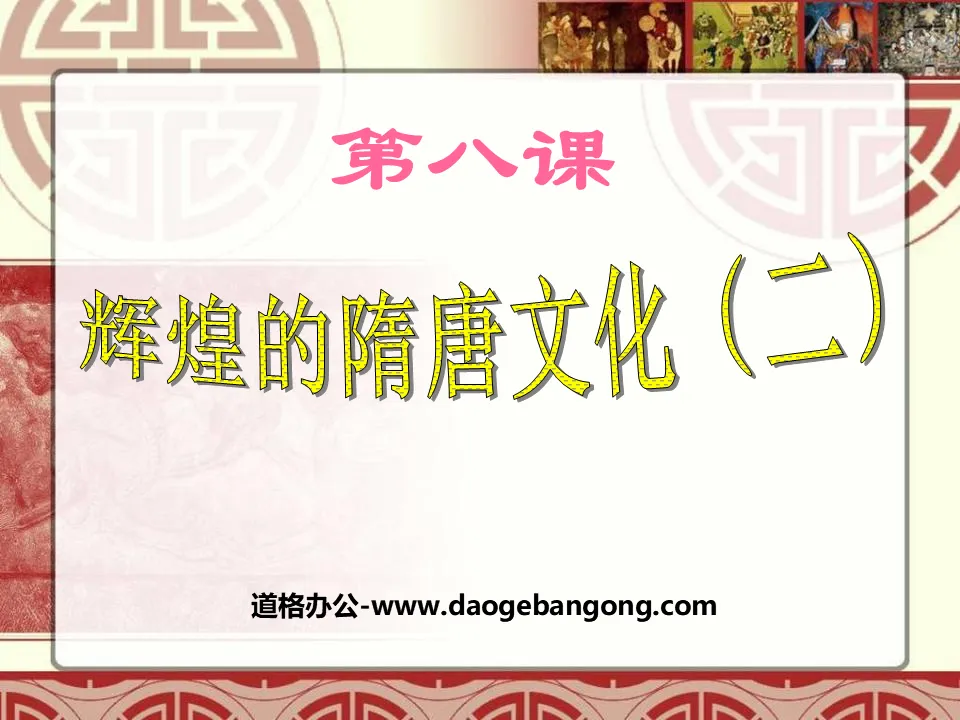
| Category | Format | Size |
|---|---|---|
| People's Education Press Seventh Grade History Volume 2 | pptx | 6 MB |
Description
"The Glorious Culture of the Sui and Tang Dynasties II" Prosperous and Open Society PPT Courseware 5
1. Calligraphy
1. Yan Zhenqing
1) Representative works: "Yan Family Temple Stele" and "Duobao Pagoda Stele"
2) Features of the work: vigorous and honest, known as "Yan Ti"
3) Status: He is the most accomplished calligrapher in the history of Chinese calligraphy after Wang Xizhi.
2. Liu Gongquan
1) Representative works: "Mysterious Tower Stele" and "Shence Army Stele"
2) Characteristics of the work: tall and graceful figure, strong bones, known as "Willow Body"
2. Painting
1. Characteristics: Religious paintings have an increasingly strong flavor of life, with figure paintings, landscape paintings, and flower-and-bird paintings appearing in large numbers.
2. Representative figures:
1) Yan Liben
Representative works: "Portraits of Emperors of the Past Dynasties" and "Palm of the Chariot"
Characteristics of painting: Strong brushwork, lines like twisted wires, and characters with both spirit and form.
2) Wu Daozi
Representative work: "Picture of Send-off to the Heavenly King"
Painting characteristics: Pay attention to line changes, strong three-dimensional sense, unrestrained style, pioneering freehand painting in later generations.
3. Dunhuang Mogao Grottoes
Mogao Grottoes, commonly known as Thousand Buddha Cave, is located in Dunhuang, western Gansu Province. It is world-famous for its exquisite murals and statues. It was built in the Pre-Qin Dynasty and has gone through the construction of the Sixteen Kingdoms, Northern Dynasties, Sui, Tang, Five Dynasties, Xixia, Yuan and other dynasties. It has formed a huge scale, with 735 caves, 45,000 square meters of murals and 2,415 clay sculptures. It is the largest and richest Buddhist art holy place in the world. The Buddhist Scripture Cave discovered in modern times contains more than 50,000 ancient cultural relics. In 1987, it was listed as a world cultural heritage.
Information about the robbery of Mogao Grottoes:
The Mogao Grottoes were once abandoned in the Ming Dynasty. After the fifty-fourth year of Emperor Kangxi of the Qing Dynasty (1715 AD), they attracted people's attention again. In the twenty-sixth year of Guangxu (AD 1900), Taoist priest Wang Yuanxi discovered the "Scripture Cave", which contained more than 40,000 scriptures, documents and cultural relics. Since then, the Mogao Grottoes have become even more eye-catching. In 1907 and 1914, British Prime Minister Stein robbed more than 10,000 suicide notes and cultural relics twice. In 1908, the Frenchman Pelliot selected the finest documents from the Scripture Cave and looted about 5,000 pieces. In 1910, most of the surviving scriptures in the Buddhist Scripture Cave were transported to Beijing and handed over to the Capital Library for collection. In 1911, the Japanese Tachibana Zuichao and Yoshikawa Koichiro took away about 600 scriptures from Taoist Wang. In 1914, the Russian Oldenburg took another batch of scripture manuscripts from Dunhuang, conducted cave mapping, and also stole the murals in Cave 263. In 1924, American Warner used special chemical glue to glue and steal 26 pieces of Mogao Grottoes murals. These thefts and vandalism caused great losses to Dunhuang cultural relics.
Discuss
1. After reading the above information, what are your feelings and thoughts?
2. How do we defend and promote the cultural heritage of the Chinese nation today?
4. Music and dance
"Hu Xuannu, Hu Xuannu, the heart responds to the strings, the hands respond to the drums... they dance" -------Bai Juyi
“Thousands of songs and dances are countless, but the dance of neon clothes is my favorite” ─ Bai Juyi
“In the past, there was a beautiful lady named Gongsun, who moved all directions with her sword dance.” ─ Du Fu
"The golden flower folds the hood, and the white horse returns late. It dances gracefully with wide sleeves, like a bird coming from the east across the sea." ─ Li Bai
1. Characteristics: magnificent, diverse styles, graceful and harmonious, sonorous and enthusiastic
2. Representative: "The King of Qin's Breaking Formation Music", "The Song of Colorful Feather Clothes" and "Hu Xuan Dance"
Reasons for the cultural prosperity of Sui and Tang Dynasties:
1. Political and economic foundation: The country is unified, strong and economically developed, laying a solid foundation for cultural prosperity. (the main reason)
2. Policy: The rulers of the Sui and Tang Dynasties, especially the Tang Dynasty, promoted enlightened and inclusive cultural policies, creating a favorable atmosphere for cultural development.
3. Domestic and foreign exchanges: All ethnic groups in the country have close exchanges, and they communicate and integrate with each other culturally; China has frequent exchanges with Asia, Europe and even Africa, and its culture can absorb excellent foreign elements.
4. Foundation of previous generations: The Sui and Tang dynasties inherited and carried forward the traditional culture of previous dynasties, especially the culture of the Wei, Jin, Southern and Northern Dynasties.
5. People’s creation: the joint creation of people of all ethnic groups.
1. Multiple choice questions:
1. The calligraphy that combines the beauty of the Southern Dynasty with the vigorous calligraphy of the Northern Dynasty is: ( )
A. Calligraphy of the Sui Dynasty B. Calligraphy of the Tang Dynasty
C. Calligraphy of the Northern Song Dynasty D. Calligraphy of the Yuan Dynasty
2. The painter who pioneered freehand painting in later generations is: ( )
A. Yan Liben B. Zhang Zeduan
C. Wu Daozi D. Zhao Meng�
3. The reason why Mogao Grottoes is called one of the largest art treasures in the world is mainly because: ( )
A. Most of the caves in Mogao Grottoes were excavated during the Sui and Tang Dynasties.
B. Most of the treasures in Mogao Grottoes were looted.
C. The architecture of Mogao Grottoes mainly reflects Buddhist characteristics
D. There are a large number of exquisite murals and colorful statues preserved in the Mogao Grottoes.
Keywords: Prosperous and Open Society Teaching Courseware, Brilliant Sui and Tang Culture II Teaching Courseware, New People's Education Edition Seventh Grade History PPT Courseware Volume 2, Seventh Grade History Slide Courseware Download, Prosperous and Open Society PPT Courseware Download, Brilliant Sui and Tang Dynasty Culture II PPT courseware download, .ppt format
For more information about the PPT courseware "Prosperity and Open Society and the Glorious Culture of the Sui and Tang Dynasties II", please click the Prosperity and Open Society ppt and the Glorious Culture of the Sui and Tang Dynasty II ppt tags.
"The Glorious Culture of the Sui and Tang Dynasties II" Prosperous and Open Society PPT Courseware 4:
"Glorious Sui and Tang Culture II" Prosperous and Open Society PPT Courseware 4 1. Brilliant Calligraphy and Painting Yan Zhenqing is the most accomplished calligrapher in the history of Chinese calligraphy after Wang Xizhi. He first studied Chu Suiliang and later Zhang Xu. He was good at innovating the old and bringing out the new. His representative works include "Duo..."
"The Glorious Culture of the Sui and Tang Dynasties II" Prosperous and Open Society PPT Courseware 3:
"Glorious Sui and Tang Culture II" Prosperous and Open Society PPT Courseware 3 Course Standards List the major achievements in calligraphy, painting, sculpture, music, dance, etc. during the Sui and Tang Dynasties. Knowledge and Abilities Understand the artistic characteristics of Yan Zhenqing and Liu Gongquan’s calligraphy, and understand Yan Liben’s...
"The Glorious Culture of the Sui and Tang Dynasties II" Prosperous and Open Society PPT Courseware 2:
"Glorious Sui and Tang Culture II" Prosperous and Open Society PPT Courseware 2 1. Brilliant Calligraphy and Painting Yan Zhenqing is the most accomplished calligrapher in the history of Chinese calligraphy after Wang Xizhi. He first studied Chu Suiliang and later Zhang Xu. He was good at innovating the old and bringing out the new. His representative works include "Duo..."
File Info
Update Time: 2024-06-11
This template belongs to History courseware People's Education Press Seventh Grade History Volume 2 industry PPT template
"The Glorious Culture of the Sui and Tang Dynasties II" Prosperous and Open Society PPT Courseware 5 Simple campus recruitment activity planning plan summary enterprise and institution recruitment publicity lecture PPT template is a general PPT template for business post competition provided by the manuscript PPT, simple campus recruitment activity planning plan summary enterprise and institution recruitment promotion Lecture PPT template, you can edit and modify the text and pictures in the source file by downloading the source file. If you want more exquisite business PPT templates, you can come to grid resource. Doug resource PPT, massive PPT template slide material download, we only make high-quality PPT templates!
Tips: If you open the template and feel that it is not suitable for all your needs, you can search for related content "The Glorious Culture of the Sui and Tang Dynasties II" Prosperous and Open Society PPT Courseware 5 is enough.
How to use the Windows system template
Directly decompress the file and use it with office or wps
How to use the Mac system template
Directly decompress the file and use it Office or wps can be used
Related reading
For more detailed PPT-related tutorials and font tutorials, you can view: Click to see
How to create a high-quality technological sense PPT? 4 ways to share the bottom of the box
Notice
Do not download in WeChat, Zhihu, QQ, built-in browsers, please use mobile browsers to download! If you are a mobile phone user, please download it on your computer!
1. The manuscript PPT is only for study and reference, please delete it 24 hours after downloading.
2. If the resource involves your legitimate rights and interests, delete it immediately.
3. Contact information: service@daogebangong.com
"The Glorious Culture of the Sui and Tang Dynasties II" Prosperous and Open Society PPT Courseware 5, due to usage restrictions, it is only for personal study and reference use. For commercial use, please go to the relevant official website for authorization.
(Personal non-commercial use refers to the use of this font to complete the display of personal works, including but not limited to the design of personal papers, resumes, etc.)
Preview




